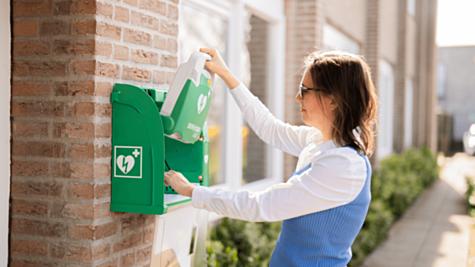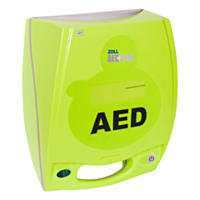What Requirements Must a Community AED Meet?

More and more communities are jointly purchasing an AED for public use. This is a fantastic development that we wholeheartedly support! However, when buying a community AED, it is crucial to consider certain requirements to ensure the device is suitable for the setting. While every AED can save lives, choosing one with the right specifications can save precious minutes during an emergency.
When buying an AED for your neighbourhood, keep the following points in mind:
1. Weatherproof model
Community AEDs are often installed outdoors in wall-mounted cabinets. Therefore, it is vital that the AED can withstand various weather conditions. Look for the IP rating (e.g., IP55 or higher), which indicates that the device is protected against dust and water.
2. User-friendliness
The AED should be easy to use, even for individuals without a medical background. Clear spoken and visual instructions are essential, and fortunately, these are standard in most models. Consider investing in a fully automatic AED, as these devices deliver shocks automatically when needed. Inexperienced users might hesitate to press the shock button on semi-automatic models, which can cause delays during CPR.
3. Children's CPR options
In neighbourhoods where children live or play, it is important that the defibrillator is suitable for child CPR. Some models, like the Mindray defibrillator, include a special children’s button. Others may require the purchase of separate paediatric electrodes or a special key.
4. Maintenance costs
To minimise expenses, choose an AED with long-lasting electrodes and batteries. For example, select a model with electrodes that last 2-3 years and a battery lifespan of at least four years. This is especially important for communities with limited financial resources. Additionally, a maintenance contract can ensure the AED is updated with the latest software and equipped with fresh electrodes or batteries as needed.
5. Clear visibility and availability
A neighbourhood AED should be easily accessible. Install it in a well-lit, central location with a recognisable AED logo. A heated outdoor cabinet will keep the device functional during cold weather, ensuring it is always ready for use.
A community AED should be robust, user-friendly, and highly visible. By choosing a model that meets these requirements, you can ensure your community is prepared to save lives when it matters most.
For more information, visit our ‘Community AEDs’ page, where you will find an overview of devices with the ideal specifications for public use. Need advice on selecting the right AED for your community? Contact us today!

